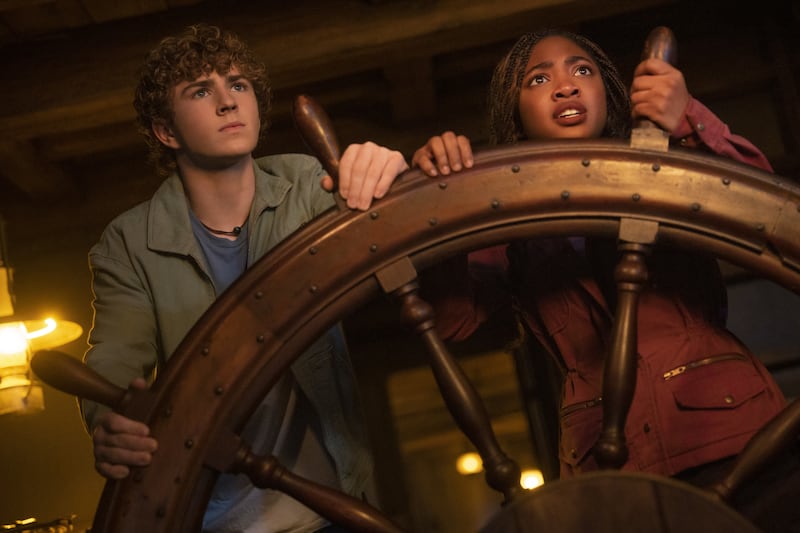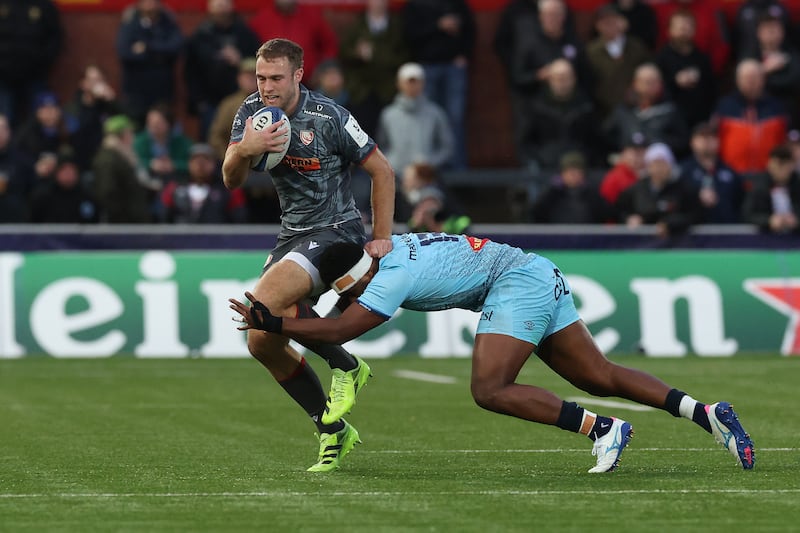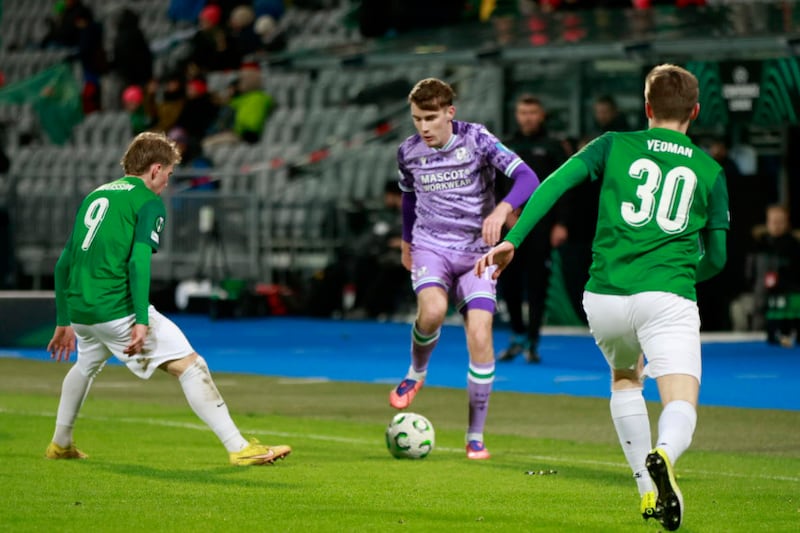It was a chilly night in Dublin on July 1st, 1996, when soprano Virginia Kerr appeared on the crow’s nest balcony of The Ark children’s cultural centre in Meeting House Square to deliver a soulful rendition of Seán Ó Riada’s arrangement of Mná na hÉireann. Her star turn was followed by a concert on the stage featuring Anuna, Shaun Davey and The Corrs to inaugurate Ireland’s presidency of the European Union and celebrate the completion of this new public space in the heart of the city.
The Temple Bar project was on a roll, with its sophisticated mix of renovated historic buildings and stylish contemporary interventions testifying to the Europeanisation of Dublin. The Ark, designed by Group 91’s Michael Kelly and Shane O’Toole, was installed behind the retained facade of a 1728 Presbyterian meeting house on Eustace Street, with a stage that could play to the square by raising horizontal hinged, slatted doors invented by Spanish architect and engineer Santiago Calatrava.
There was something surreal about sitting out in Meeting House Square on balmy summer nights to watch movies projected on to a screen rolled down over the facade of the new Gallery of Photography, with everyone getting a plastic cape in case of rain. It didn’t feel like Dublin at all. Only a few years previously, the new square had been a surface car park, as was Temple Bar Square, while Curved Street – bisecting the urban block between Eustace Street and Temple Lane – was a pair of derelict sites.
Group 91, the consortium of 13 talented younger architects who won a competition for the Temple Bar Architectural Framework Plan and then divvied up the plum cultural projects among themselves, were showered with awards for their work, and some of them went on to win accolades abroad. Architects, planners, urbanists and geographers flocked to Dublin, hailing what had been achieved in this 10-hectare chunk of the city’s historic core as one of the finest urban renewal projects in Europe.
RM Block
And we were in right the middle of it all. My partner Eamon Slater and I (with help from some friends) had queued for a week in February 1995 to make sure of getting what estate agents would call a “duplex penthouse” on the upper floors of a renovated 1840s warehouse building at the corner of Temple Lane and Cecilia Street. I had been writing in The Irish Times about the vital need for people to live in the city centre, so the time had come for me to put my money where my mouth was.
Temple Bar Properties, the State agency set up to oversee the renewal and development of the area, was selling apartments on a “first come, first served” basis, so queueing became de rigueur – though the length of time we did it for set a new record. The sale of our previous home, a lovely end-of-terrace house on Casimir Road in Harold’s Cross, and an EBS mortgage enabled us to pay £195,000 for this 124sq m apartment, and there were generous tax incentives that made it feasible.
We were so full of optimism about the future of Dublin then. At last, things were going in the right direction. People were moving into town, populating the upper floors of buildings, whether renovated or newly built. And during that first summer in Temple Bar when the sun shone every day, it was a bit like Barcelona. Nearly everywhere in the city centre, there was something new to marvel at and celebrate. It seemed that pre-Celtic Tiger Dublin had truly become a European capital city.
It was such a privilege to walk out of our building – The Granary – and find everything within easy reach. There was a newsagent’s across the street, an internet cafe on our ground floor, plus all the shops on Grafton Street and Henry Street. And good restaurants like Fitzer’s and Trastevere on Temple Bar Square, Nico’s and Frères Jacques on Dame Street, the Clarence Hotel’s Tea Room and Eden on Meeting House Square, where there used to be a wonderful food market every Saturday.
Premier among the area’s cultural offers was the Irish Film Institute (IFI), installed by O’Donnell + Tuomey Architects in the former Quaker meeting house on Eustace Street. It was so close that we could be sitting in its cinema seats within five minutes of leaving “the flat”, as we always called it. Whenever I gave walking tours of the area, I would always bring groups through it, noting the metaphorical roll of film in the middle of the corridor leading in from its entrance to the central roof-lit courtyard foyer.
Our apartment had an east-west orientation, with loading bay doors opening out into Curved Street. After The Ark opened as Europe’s first purpose-built children’s cultural centre, we would see excited primary school kids making their way there, walking in pairs with a teacher at the front and another bringing up the rear. That was a charming image of the daytime Dr Jekyll ambience of Temple Bar, by contrast with the after-dark, drink-fuelled Mr Hyde persona that it acquired over time.
Earmarked in the 1970s for development as a mega transportation centre, CIÉ had bought up lots of buildings in the area and made the mistake (from its viewpoint) of letting them on short-term leases at affordable rents to artists and galleries, funky clothes shops, bookstores, cafes, pizzerias, community resource centres, recording studios, performance spaces and other activities that generated a “Left Bank” bohemian atmosphere, even in the midst of endemic urban decay.
By 1987, Charles J Haughey could see its potential, famously pledging that he “wouldn’t let CIÉ near the place”. And so, in 1991, Temple Bar Properties – initially headed by Paddy Teahon, then assistant secretary general in the Taoiseach’s department, and later by Laura Magahy – was set up with a mission to create a “bustling cultural, residential and small business precinct that will attract visitors in significant numbers ... building on what has already taken place spontaneously in the area”.
There was significant funding from Brussels for what was planned as “Dublin’s Cultural Quarter”, but the money was coming from the EU’s tourism programme – and the easiest way to increase footfall and “put bums on seats” was to facilitate the development of pubs and restaurants. Within the first five years, almost an acre of drinking space was added to the area, turning it into “the Temple of Bars” and drawing revellers from all over Europe on Ryanair flights to enjoy the “craic” in Dublin.
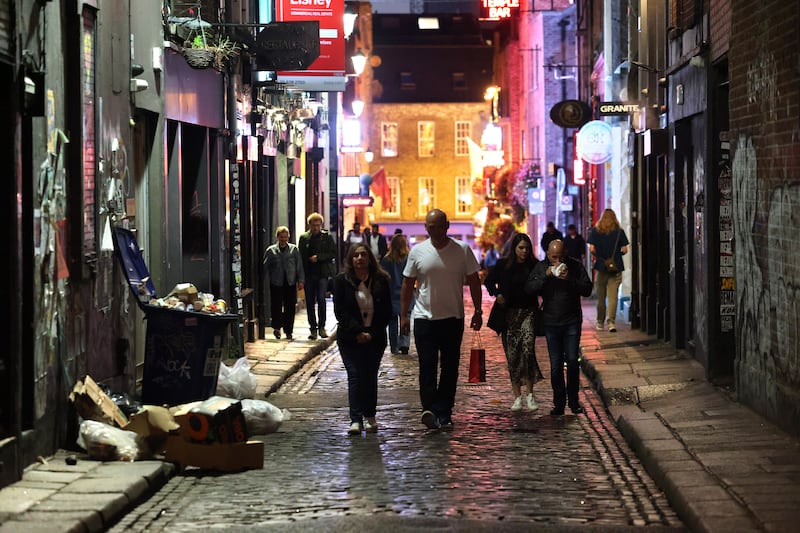
In April 1997, two years after moving in, I flagged in The Irish Times that Temple Bar was turning into Dublin’s version of Sachsenhausen, the entertainment zone of Frankfurt in Germany, where nearly every building on its quaintly cobbled streets is either a bar, a restaurant, a nightclub or a tourist trinket shop: “The main drag, along Temple Bar and East Essex Street, is thronged at weekends by drinkers on a seemingly endless pub crawl. The atmosphere can be unsavoury, even dangerous.”
[ The future of Temple Bar: Dystopian wasteland or ‘thriving cultural scene’?Opens in new window ]
Gates had to be erected around Meeting House Square in 1997 to close it at night because of fears that it would be trashed. Given that one of the primary goals of the Temple Bar project was to create new public spaces, this in itself was an admission of failure – and an official acknowledgment that we have a real problem in Ireland with our “public realm”. Over the years since, policing in the area has been light touch, with an increased Garda presence only after serious incidents happen.

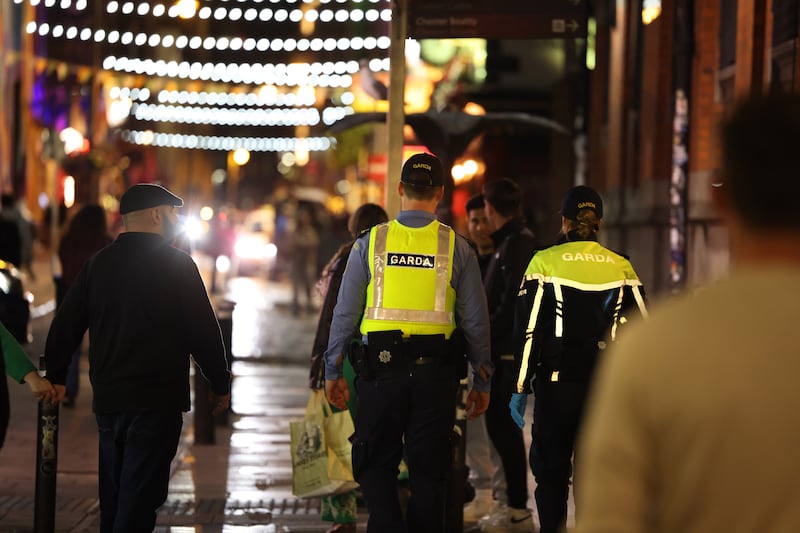
In 1998, the Dublin City Development Plan was amended to ensure that there would be a suitable mix of day and night-time activities so that pubs and other licensed premises would not dominate cultural, residential and retail uses in the area. But this was quietly dropped in 2005, probably because Temple Bar had become such a key element in the State’s tourism offer that the need for balance was seen as an impediment to its “success”. Increasingly, the residents were marginalised.
At its peak in 2011, there were around 2,000 people living in the Temple Bar area – mainly in the west end, between Parliament Street and Fishamble Street. From 2015 onwards, the number was eroded as many apartments that had been occupied by long-term renters were turned into tourist short-lets via Airbnb, the Key Collection and other platforms. Day after day, we would see (and hear) tourists trundling wheelie bags through the cobbled streets to find flats they had booked that used to be people’s homes.
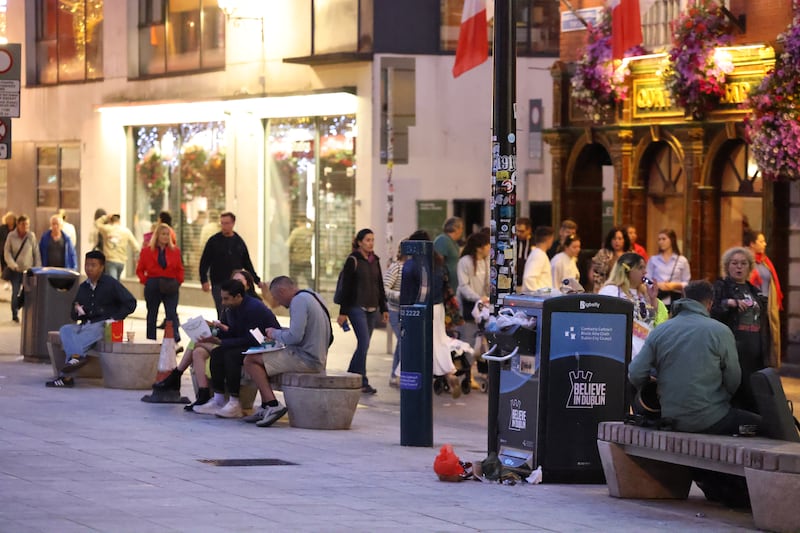
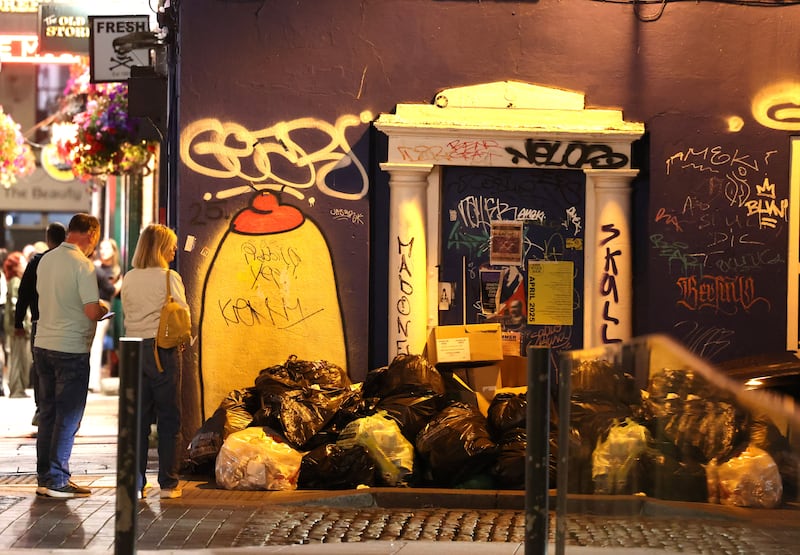

Noise was a persistent problem. Not so much street noise, but heavily amplified music from pubs, venues and nightclubs. As chair of an informal group, Temple Bar Residents, I spent a lot of time making “observations” on planning applications or enforcement complaints to Dublin City Council and appeals to An Bord Pleanála. And turning up in the District Court to object to the renewal of music and singing licences for abusive pubs blasting out noise with doors wide open and even external loudspeakers.
Proposals to change the licensing laws so that late bars and nightclubs could stay open until 6am if they chose to do so – in response to the Give Us The Night lobbying campaign by DJs, publicans and other vested interests – filled us with dread and required a serious investment of time and effort in making submissions to the Night-time Economy Taskforce, the Department of Justice and others, stressing the need for an effective European-style noise control regime to protect city centre residents.
The final straw for us came in January 2022 when we heard loud dance music emanating from a premises next door that used to be occupied by Shan, an Indian restaurant, which had been turned into the DL Bar. When I went in to find out what was happening, there was a DJ with decks playing at 88dB according to my decibel meter, and a crowd bopping on the floor in front of a fully stocked bar. If this racket was to continue night after night, I feared that our home would become uninhabitable.

We managed to put a stop to it. But we were getting older and there was no lift in The Granary nor any space to install one, so the stairs would have defeated us in the longer term. So we put the flat up for sale in an off-market transaction and got a good price for it, which enabled us to buy a beautiful new apartment in deepest, leafiest Blackrock with views south towards Three Rock Mountain. Monty Python’s catchphrase sprang to mind: “And now for something completely different.”
Having made the move in November 2022, we’ve got used to everything being at a distance rather than close at hand. One social downside of being in “the burbs” is that friends no longer call in casually, as they used to do so often when we lived in the city centre; now they have to plan a trip. We still go into town for a variety of reasons, but don’t miss living there because the tranquillity out here is beyond measure. A bit like Temple Bar during the Covid lockdowns, really.

















